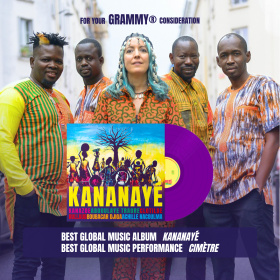Sustainability in music
Over the last 15 years, digital music has journeyed along an unpaved road, winding its way into a new connected world using the tools and assumptions of yesteryear.
 Is today's music industry sustainable? Photo: www.pcmag.com
Is today's music industry sustainable? Photo: www.pcmag.com
The old and new business constructs have vastly different distribution mechanisms, container sizes, business models, ecosystems, and consumer expectations – but the core around which the industry is built, great music and appreciative fans, remains largely the same. Thanks to all the bright thinkers, insiders and outsiders who contacted me after I reimagined the business of music, I now conclude that we are reaching a tipping point of industry acceptance: streaming is here to stay (yes, finally), alongside simultaneous realizations that change is needed in order to benefit from the data avalanche, support the next generation of artists, and grow the pie.
Reports from the IFPI and RIAA share positive news that revenues, streaming and paid subscriptions are up globally, but leading services continue to suffer massive operating losses, complaints of low royalty payouts are loud and clear, and ugly copyright and legal battles abound. It is a sort of industry cognitive dissonance - revenues are up yet everyone is unhappy, and services are failing economically while adoption is growing. What will it take for the business of music to reach a level of sustainability for the whole value chain - from artists, songwriters, publishers, labels, services, all the way through to consumers? Is this even possible? Is there enough pie to go around?
Many deep ecosystem problems need to be solved – including messy data and revenue leakage, flawed “norms” that are long in the tooth, and lack of music/tech industry alignment. But blinders and conflicting perspectives on all sides seem to be leading to more glass-house finger-pointing and less viable paths forward. I don’t believe any of the problems will be adequately solved without a shared vision of sustainability in the future. In other words, what are we building towards?
I’ve broken the music/tech industry into five broad and interconnected elements that are required for a future state of sustainability in music, which I simply define as the ability to support the ongoing cycle of creation, distribution and enjoyment of music.
1. Great music
Without the work of artists, there is no “industry.” Artists who perform and compose are creating incredible music in every style, shape and form imaginable and using new instruments and distribution channels daily. It's never been easy to make a living as an artist in any discipline and anyone who tells you otherwise is uninformed. In the digital lake of 40 million+ recorded songs, currently the top 1% are doing quite well, the bottom half sitting on servers around the world untouched and a talented middle tier struggling for attention and pennies. We need to do better. Labels and publishers have historically played a key role in artist development, but management companies, label services, and artist-centric platforms are increasingly defining new rules of supporting the creative process over time.
2. Engaged fans
There has never been a better time to be a music fan and the listening data shows it. Engagement with music is at an all-time high and access to the world’s diverse sounds is astonishing – even overwhelming. Derivative works are bringing previously released music back into the zeitgeist, User Generated Content (UGC) is here to stay and consumers hold the power in the digital world. As more legally licensed options have been made available, we are seeing increasing willingness to pay, with $120 per year being the deal of the century for super fans and yet few options other than “free” for casual fans. So we have engaged fans accessing great music, but that isn’t enough for a healthy music economy.
3. Rights Data Management
It should now be abundantly clear that the data identifying recorded music and its split ownership rights is a key component linking the money flow between great music and engaged fans. Without clean data, no one knows who created what, how to license what from whom, who to pay, or how much. The messiness of music rights data is the industry’s “hair shirt” and I’m not sure how much longer we can collectively stand to wear it. Now that there is consensus that streaming is here to stay, it should also follow that systems need shoring up. This particular problem is best solved from within the industry itself or at least by companies who view labels, publishers and artists as their customers rather than the DSPs - a fundamental requirement for business alignment in who is working for whom.
4. Copyright Law
Along with the establishment of work that can be copyrighted, there are laws governing its use. Copyright laws around the world are failing to keep pace with the unprecedented change of technology, and there are battles being fought on all sides to shift and update laws to better reflect the reality of today’s marketplace. Trouble is, there are many versions of that same reality, most notably between the labels, publishers and PROs themselves – not to mention the technology giants. Copyright law will be an albatross around our necks for a long time and any change is likely to be slow and incremental in impact, therefore we have no choice but to find better ways to work within the constructs of what we have now, in parallel with much needed reform efforts.
5. Business
The business of music is a bouillabaisse of supply/demand, laws/free market, relationships and collaboration, and product market fit. A spark occurs, revenue is generated, and money flows back through the chain from fans and commercial use into the creative community. This is where we need a lot more innovation in revenue generating experiences that will grow the pie – feature and catalog differentiation, variable price points, bundles with devices or pipes, curation with context, new “containers” for music such as immersive experiences and VR (beyond the radio-friendly 3 minute single and physical media-derived album), and generally different strokes for different folks.
Music has become background – how can we move it to foreground? Traditional music companies have been cash starved for a decade, and so the prize has been the biggest bidders and the resulting framework for "business" has become synonymous with "negotiation" – yet these are not (or should not) be the same thing. In order to grow the revenue pie and keep music at the cultural forefront, we need to look towards experiences that better leverage the creative side of music with the tech pipes and platforms.
In order to achieve sustainability, especially in further nurturing the streaming experience, we need all five of these building blocks. We need companies and organizations investing and competing to be the best in each of these five areas:
Great music – which labels, publishers, management companies and organizations are best at identifying and fostering new talent? Helping to invest at different career levels? Have the best accounting systems to track micropayments and ensure accurate metadata? Who is helping the self-released artist?
Engaged fans – which platforms and services know their customers well enough to engage around music? How can they encourage more listening and connect artists meaningfully with these fans? How can an engaged fan turn into a high value fan for an artist? How can we better serve tribes and casual fans?
Rights data management – who is optimizing modern technology so that rights data is simply a conduit to attribution and getting paid? How can data that is in a state of constant change be cleaner? Which practices need to be left behind, while new methodologies adopted? Privacy need not be lost in the establishment of consistency and standards. I dream of a future state for industry events without the need for metadata panels.
Copyright Law – is it possible to have laws stay current with technology? What will get core stakeholders aligned to foster protection that is better for the whole? Short of a massive overhaul, are there interim wins?
Business – we’ve currently got a handful of multi-billion dollar companies offering legally licensed music to fans – this is a fantastic new baseline, but is it enough to sustain the entire industry? Is niche, mid-tier, and back catalog music reaching fans and generating adequate royalties through the pipes to the niche, mid-tier and heritage artists? How can we move to spur innovation while retaining value? Are there other ways to grow now that the industry is somewhat painted into a corner with a value proposition of $9.99 per month for every crown jewel ever created?
Previous iterations of business surrounding music have needed all elements to thrive, building upon the essential great music and fans: terrestrial radio needed the three.minute single and blanket licensing to fill airways with curated playlists, jocks, and ads, and its companion the retail business would have failed without standard jewel boxes, one-stops, co-op marketing, and the ability to sustain a corner niche shop alongside big box retailers. Those days are past and no, they weren’t perfect.
The digital genie is squarely out of the bottle – however, we now have a new baseline in streaming adoption on which to build a new ecosystem and framework. What is the equivalent of the three-minute single for our nascent streaming generation? Let’s build for that...
Originally published on 13 June 2016 in Rethink Music.
























Commentaires
s'identifier or register to post comments